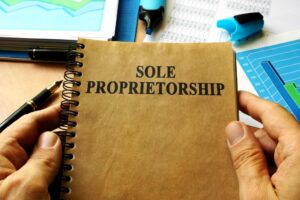
The result, not surprisingly, will equal the total depreciation per year again. The composite method is applied to a collection of assets that are depreciable property examples not similar and have different service lives. For example, computers and printers are not similar, but both are part of the office equipment.
Which assets are not depreciable?
Land is not depreciated because land is assumed to have an unlimited useful life. Other long-lived assets such as land improvements, buildings, furnishings, equipment, etc. have limited useful lives. Therefore, the costs of those assets must be allocated to those limited accounting periods. Was this answer helpful?
Depreciate the part of the new automobile’s basis that exceeds its carryover basis (excess basis) as if it were newly placed in service property. This excess basis is the additional cash paid for the new automobile in the trade-in. Report the inclusion amount figured as described in the preceding discussions as other income on the same form or schedule on which you took the deduction for your rental costs. Qualified business use of listed property is any use of the property in your trade or business.
Which states allow bonus depreciation?
If you buy qualifying property with cash and a trade-in, its cost for purposes of the section 179 deduction includes only the cash you paid. Generally, this is any improvement to an interior portion of a building that is nonresidential real property if the improvement is placed in service after the date the building was first placed in service. Off-the-shelf computer software is qualifying property for purposes of the section 179 deduction. This is computer software that is readily available for purchase by the general public, is subject to a nonexclusive license, and has not been substantially modified. It includes any program designed to cause a computer to perform a desired function.
If it is unclear, examine carefully all the facts in the operation of the particular business. The following example shows how a careful examination of the facts in two similar situations results in different conclusions. To be depreciable, the property must meet all the following requirements. Adam Hayes, Ph.D., CFA, is a financial writer with 15+ years Wall Street experience as a derivatives trader. Besides his extensive derivative trading expertise, Adam is an expert in economics and behavioral finance.
Examples of Depreciating Assets
For listed property, you must keep records for as long as any recapture can still occur. The depreciation deduction, including the section 179 deduction and special depreciation allowance, you can claim for a passenger automobile (defined earlier) each year is limited. For other listed property, allocate the property’s use on the basis of the most appropriate unit of time the property is actually used (rather than merely being available for use).
To determine basis, you need to know the cost or other basis of your property. If you use the standard mileage rate to figure your tax deduction for your business automobile, you are treated as having made an election to exclude the automobile from MACRS. You must treat an improvement made after 1986 to property you placed in service before 1987 as separate depreciable property. Therefore, you can depreciate that improvement as separate property under MACRS if it is the type of property that otherwise qualifies for MACRS depreciation. For more information about improvements, see How Do You Treat Repairs and Improvements, later, and Additions and Improvements under Which Recovery Period Applies?
Tax & Accounting
You also made an election under section 168(k)(7) not to deduct the special depreciation allowance for 7-year property placed in service last year. Because you did not place any property in service in the last 3 months of your tax year, you used the half-year convention. You figured your deduction using the percentages in Table A-1 for 7-year property. Last year, your depreciation was $2,144 ($15,000 × 14.29% (0.1429)). You bought office furniture (7-year property) for $10,000 and placed it in service on August 11, 2022.
The numerator of the fraction is the current year’s net income from the property, and the denominator is the total income anticipated from the property through the end of the 10th tax year following the tax year the property is placed in service. For more information, see section 167(g) of the Internal Revenue Code. You stop depreciating property when you have fully recovered your cost or other basis. You fully recover https://www.bookstime.com/blog/what-does-accounts-receivable-mean your basis when your section 179 deduction, allowed or allowable depreciation deductions, and salvage value, if applicable, equal the cost or investment in the property. If you place property in service in a personal activity, you cannot claim depreciation. However, if you change the property’s use to use in a business or income-producing activity, then you can begin to depreciate it at the time of the change.
Importance of Depreciation in Accounting
The remaining cost can be deducted over multiple years using regular depreciation until it phases out. The objective of IAS 16 is to prescribe the accounting treatment for property, plant, and equipment. The principal issues are the recognition of assets, the determination of their carrying amounts, and the depreciation charges and impairment losses to be recognised in relation to them.
